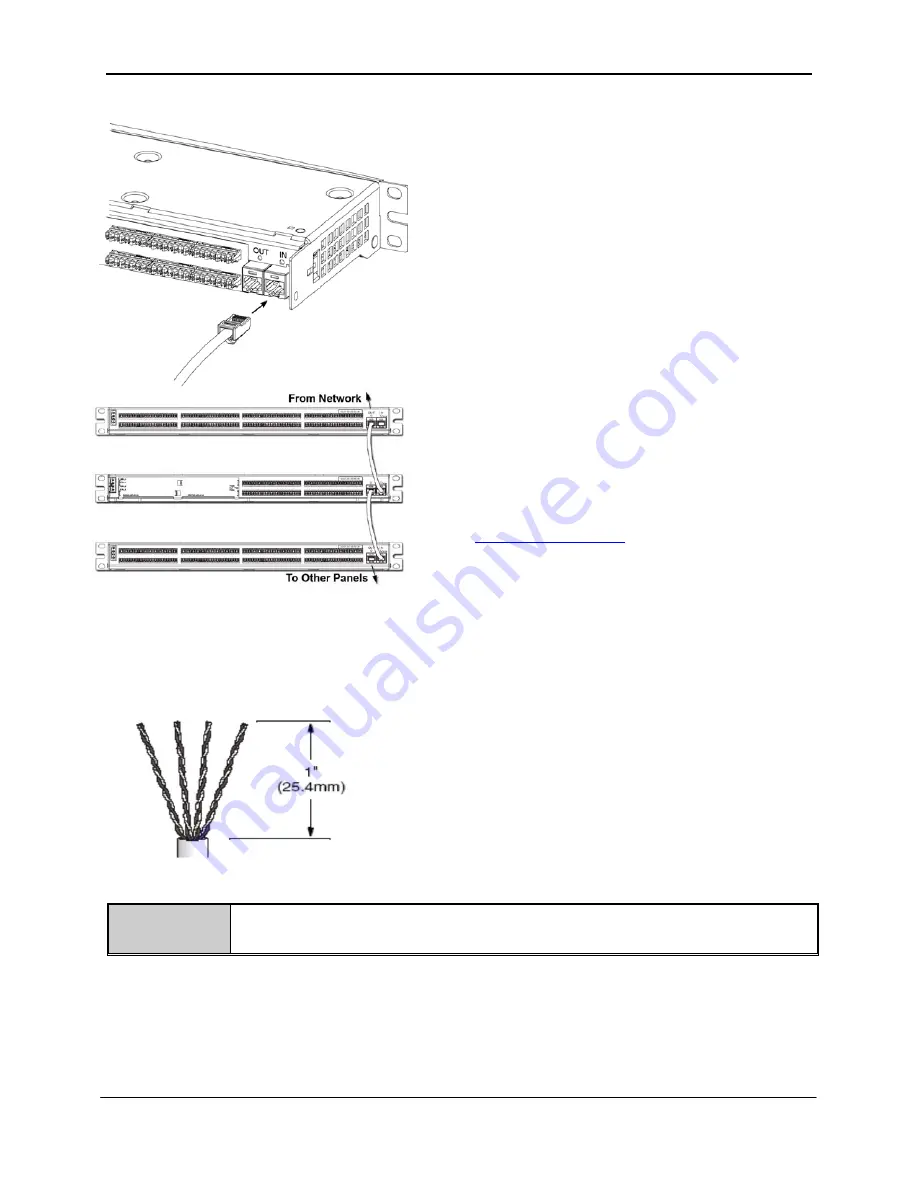
PANDUIT
®
DPoE
™ Power Patch Panel User Manual
Part Number: PN378E
12
Network Connection
5. If the
DPoE
™ Element Manager is not being used
to remotely manage the network of
DPoE
™
Power Patch Panels, skip to
Connecting the
Powered Devices
below. Otherwise, using a
standard patch cord (for example,
PANDUIT
part
number UTPCH3 or UTPSP3), connect the IN
management port on the back of the panel to an
Ethernet switch. A DHCP Server must be on this
network (unless the
DPoE
™ Power Patch Panel
has been configured for Static IP operation). The
panel may also be directly connect to a PC with
the
DPoE
™ Element Manager installed, but this
PC must be setup as a DHCP Server.”
6. If multiple panels are being used in the network,
the OUT management port from one panel may
be connected to the IN management port on the
next panel in a daisy chain fashion, as shown.
Once all of the connections are made, the
DPoE
™ Element Manager or another Network
Manager will be able to communicate with all the
panels over this daisy chain of connections. (See
Provisioning the Panel
for more information.)
Connecting the Powered Devices
7. Remove 1 inch (25.4 mm) of cable jacket being careful not to damage the conductors.
8. Fan out all four twisted pairs in the specified wiring
sequence (see color-coded wiring positions in
Table 4:
Color-Coded Wire Positions for 802.3af-2003
Compliant Devices
and
Table 5: Color-Coded Wire
Positions for Alternate PoE Devices
below). The
colors are also displayed on the Wiring Template
Label, already installed on the back of the
DPoE
™
Power Patch Panel.
The
DPoE
™ Power Patch panel supports standard IEEE 802.3af-2003 devices as well as alternate PoE
devices consistent with the Cisco legacy devices.
NOTE:
The
DPoE
™ Power Patch Panel can terminate most 22-24 AWG solid or stranded
IWC wire with a .050” (1.27mm) max o.d. either PVC or Plenum rated.













































